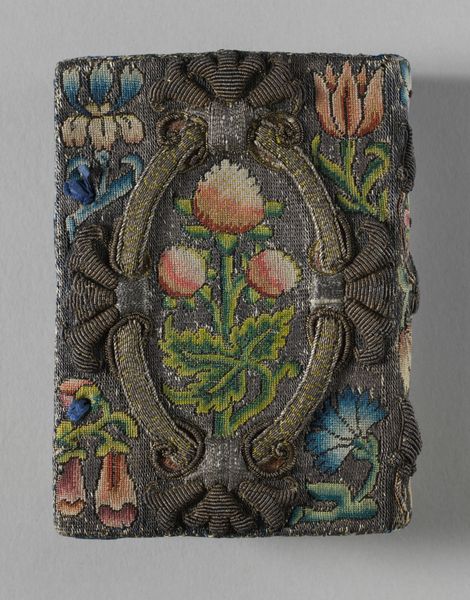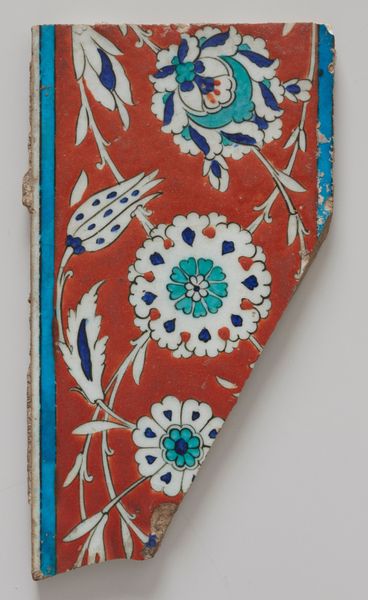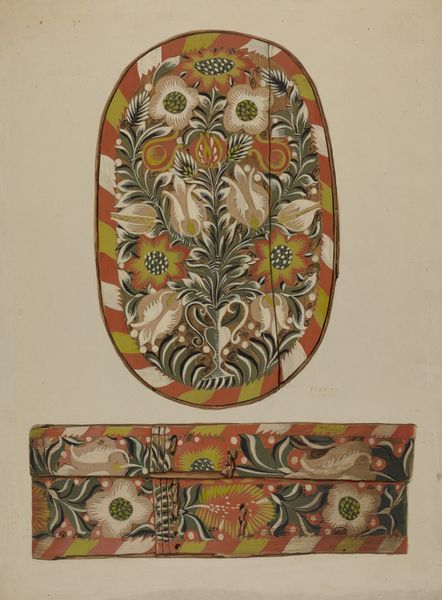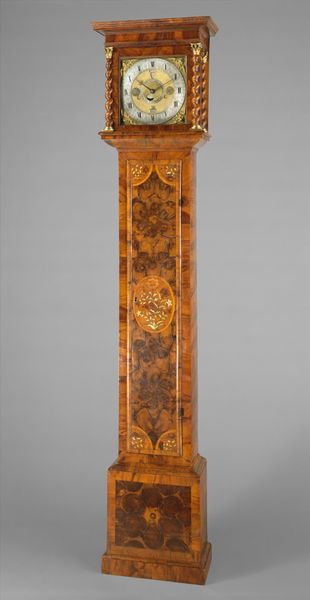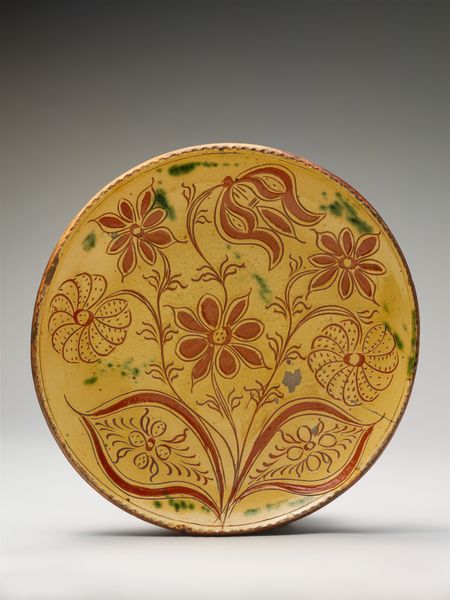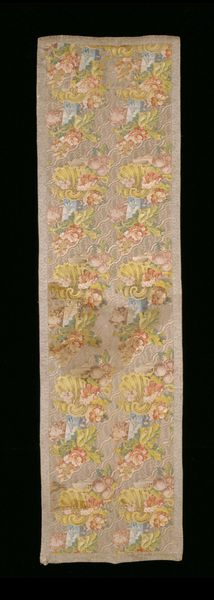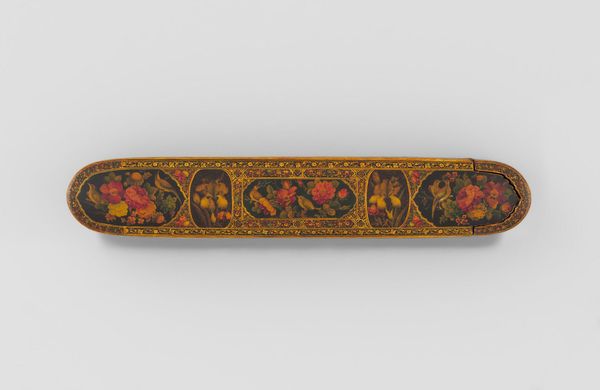
carving, relief, wood
#
carving
#
relief
#
folk-art
#
ceramic
#
wood
#
decorative-art
#
indigenous-americas
Dimensions: 32 1/4 x 13 1/4 x 14 1/4 in. (81.92 x 33.66 x 36.2 cm)
Copyright: Public Domain
Editor: This lovely Cradleboard, crafted by an unknown Kahnawake Mohawk artist sometime between 1850 and 1880, is made of carved and relief-worked wood. The colours are so vibrant. The flowers and birds give it a cheerful feel. I’m curious, what symbolic meanings might be embedded in these images? Curator: A beautiful object, isn't it? Cradleboards such as this transcend mere utility; they're powerful visual texts. The birds, the flowering tree… consider how these natural images might resonate within Mohawk cosmology. Birds, often messengers, bridge the earthly and spiritual realms. The tree, with its life-giving fruit and flowers, stands as a symbol of continuity, growth, and nourishment. The inclusion of the bears is important: can you see them near the base? Editor: Yes, I see them. How might they figure into it? Curator: Bear symbolism connects the board to concepts of strength, protection, and healing. Think of the emotional reassurance these symbols offered a child secured within, and to their caregivers too. Does knowing these iconographic interpretations shift your initial sense of the cradleboard’s ‘cheerful’ feel at all? Editor: It does add a layer. It's not just decoration, but a deliberate arrangement of symbols meant to give strength to the baby and hope to the parents. It makes it feel so intentional and important. Curator: Precisely! Cultural memory and hope made visible through the intentional selection of potent, culturally relevant imagery. It’s a remarkable example of visual communication across generations, wouldn't you say? Editor: I would. I initially saw just pretty pictures, but now I understand that each element carries meaning that connects to their culture and values. Thank you for that deeper look.
Comments
minneapolisinstituteofart almost 2 years ago
⋮
The Kahnawake (Mohawk) of the Haudenosaunee (Iroquois Confederacy) create cradleboards from large planks of wood to which they attach protective bows that go over the child's head. Some examples have footrests to provide additional support. The backs are decorated with elaborate painted carvings. In the 17th century, the Kahnawake lived in an area surrounded by French-Canadian settlers, whose folk art influenced traditional Kahnawake art. Some scholars believe that the carving of some cradleboards was created by French-Canadian folk artists, but the iconography has a consistent theme related to the Kanien'gehaga traditional worldview. There is usually a carved flowering tree that may reference the Sky World; the tree often has a mother bird feeding her young and represents the relationship between the cosmos and the Kahnawake people.
Join the conversation
Join millions of artists and users on Artera today and experience the ultimate creative platform.
